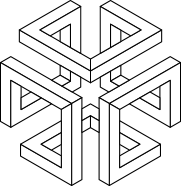
Scientific Animation
Scientific animation refers to the use of graphics and animation techniques to create visual representations of scientific concepts, processes, and phenomena. The purpose of scientific animation is to explain complex ideas and make them easier to understand. Scientific animations can be used in a variety of fields, including biology, chemistry, physics, medicine, and engineering. They can help demonstrate the workings of the human body, the behaviour of molecules and chemical reactions, and many other scientific concepts. Scientific animations can also be used to simulate experiments, visualize data, and explore potential scenarios.
3D animation is ideal for scientific animations where an extremely precise representation is necessary.
It is also possible to create corporate marketing and training videos with 3D animations.




STEPS INVOLVED WHEN PRODUCING A 3D ANIMATION
These phases may overlap and the order in which they are completed may vary depending on the specific project and animation team, but these are the general steps involved in creating a professional 3D animation.

1. PRE-PRODUCTION
This is the planning phase where the concept and storyboard of the animation are developed. In this phase, the animation team determines the style, tone, and scope of the project.

2. MODELLING
In this phase, 3D models of characters, objects, and environments are created. These models will be used as the basis for the animation.

3. RIGGING
The rigging phase involves creating a virtual skeleton for each 3D model, which will be used to control the movement of the models in the animation.

4. ANIMATION
In this phase, the animation team brings the 3D models to life by creating keyframe animations, motion capture data, or a combination of both.

5. LIGHTING & TEXTURING
In this phase, the 3D environment is lit and textured to create the desired mood and style.

6. EFFECTS
In this phase, special effects such as smoke, fire, and particle effects are added to enhance the overall look and feel of the animation.

7. RENDERING
The final step in the animation process is rendering, which involves using specialized software to calculate and create the final frames of the animation.

8. POST-PRODUCTION
In this phase, the rendered animation is edited and assembled into its final form. Audio, music, and sound effects may also be added at this stage.


